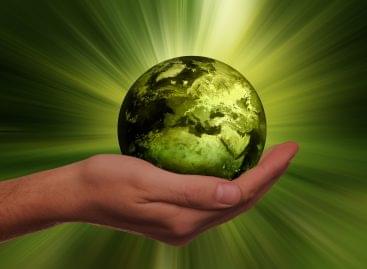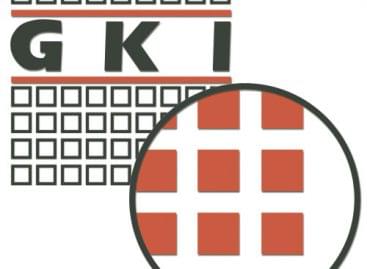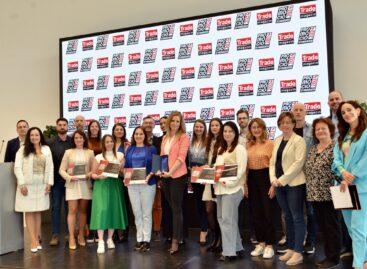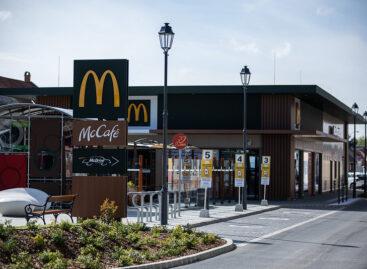A Hungarian company can build the most modern waste treatment plant in the Balkans
An exemplary innovation project is being launched in the Serbian border town, within the framework of which hydrogen fuel can be made from discarded diapers.

(Photo: Pixabay)
Waste management is one of the most pressing and complex problems of our time, which requires an innovative approach and an urgent solution, as it fundamentally determines sustainable development and the circular economy model. According to the data of the European Commission, people living in the territory of the Union today produce an average of 500 kg of garbage per year. Only 48% of the total approximately 225.7 million tons of garbage will be recycled. There is no uniform practice in the management of household waste in the EU: based on the EU average, 24% of household waste ends up in landfills, but there are Member States where this rate exceeds 70%. There are also more advanced and outdated technologies for handling this – the latter are predominant in the Balkan region. Now, the proprietary technology of a company from Veszprém is reinterpreting the currently known methods of waste utilization: they produce an energy carrier from household waste and garbage, which now has a serious economic value in the period of the energy crisis.
Garbage and waste are as old as humanity: as long as the world has existed, people have been producing garbage
However, the treatment of this and the view of what this means may differ from country to country. The practice of waste management dictated by EU standards is neither simple nor cheap, and the amount of waste generated in cities is constantly increasing. Waste management requires an extensive infrastructure, and its operation also entails significant costs: garbage must be collected by the population and municipalities, then the garbage must be transported and then treated. During the treatment, the waste is sorted, and then comes recycling and the “transformation” of the waste into secondary fuels (RDF and SRF), most of which ends up in landfills. One of the most accepted waste management practices is incineration: garbage is burned after collection, during which thermal energy is generated (possibly electricity with low efficiency) and this is utilized for the given city, where possible (this model only works in North-West Europe). In addition to all of this, in the case of waste incinerators, there may also be opposition from the public, because today people do not like to live next to or near a waste incinerator. If, for this reason, a city installs it outside the borders of the settlement, then it has to take into account the increased transport costs, as well as what it can do with the thermal energy produced there (because it cannot be transported).
A significant proportion of Western European waste (30-35%) previously went to the Far East, where it was used as additional fuel in coal-fired power plants
However, this route was recently closed due to the ban on waste imports by Asian countries: China, Indonesia, Malaysia and Vietnam also banned waste imports. Therefore, most of the waste still flows to Eastern Europe. Today there is a huge supply of waste in the EU, as a result of which the waste owners pay the destructors, i.e. it is no longer the user who pays for the RDF, but the producer of the RDF pays for the destruction of the waste, for example a coal-fired power plant or a cement factory, whose operation can utilize waste-based fuel for energy production. However, in the case of the former, long-term operation is questionable, even now during the energy crisis, as they may be closed for climate protection reasons.
Another aspect of the problem is the issue of landfills: the landfills built in the EU, which are usually subsidized, fill up quickly, but there is no support for expansion
In the long term, it can be said that the amount of waste generated in the EU is not only constantly increasing, but there is no long-term vision or technology that fits into the circular economy model for what to do with it. Horge Technologies, based in Veszprém, has developed a waste management technology that is unique in the world, the essence of which is that in contrast to the waste management practice established in the EU, based on which waste is incinerated (61 million tons per year, 27% of the total amount of waste), the Hungarian company turns waste into an energy carrier. The energy carrier is different and more valuable than the energy produced during combustion (thermal energy) because it can be transported, so it is not geographically fixed (it can be delivered to another city), where it can be used as electricity and/or thermal energy, and can also be converted into other forms of matter (for example into hydrogen, thus it can also be a fuel), and it can also be a raw material for other useful chemicals. In relation to the wide range of possible uses of the technology, Horge Technologies’ founder and manager, Károly Henger, stated that “in addition to being able to process all the waste produced by the population, our technology does not emit harmful substances, for example toxic dioxin does not escape, such as in the case of incinerators. In addition, our biggest competitive advantage is that we are able to produce real value from waste, i.e. an energy carrier, which becomes energy when and where it is needed.”
Related news
NGM State Secretary: the ESG Act strengthens the competitiveness of Hungarian businesses
The aim of the law defining the framework for responsible…
Read more >Twenty years in the EU: how has Hungarian consumption changed?
On 1 May 2004 ten new member states joined the…
Read more >Designer shoes made from recycled coffee grounds by Nespresso
Nespresso and the French fashion startup Zèta created street shoes…
Read more >Related news
The “Promotion of the Year 2024” awards were presented
This year, the “Promotion of the Year 2024” competition was…
Read more >Waves in the company trend – the changing faces of liquidations and company formations
Even with decreasing terminations, decreasing numbers of companies in the…
Read more >The first McDonald’s restaurant in Esztergom has opened
The first McDonald’s restaurant in the city of Esztergom opened…
Read more >







